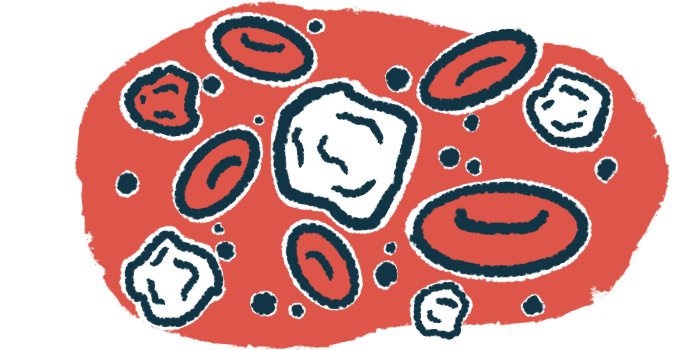Monocyte Profiles Can ID Distinct Groups in Systemic Scleroderma
Analysis of immune cell gene activity may predict patient's response to treatment
Written by |

Analyzing the global genetic activity of immune cells called monocytes can identify distinct groups among people with systemic scleroderma, a new study indicates.
This type of analysis “may represent a viable mechanism for identifying patients and potentially their response to therapeutics,” its researchers wrote.
The study, “Three Distinct Transcriptional Profiles of Monocytes Associate with Disease Activity in Scleroderma Patients,” was published in Arthritis & Rheumatology.
Activity seen in genes linked to inflammation, fibrosis
Scleroderma is caused by the immune system attacking healthy tissue. Exactly how the immune system becomes dysregulated, however, remains incompletely characterized.
Scientists in the U.S. conducted an analysis aiming to characterize monocytes in scleroderma patients. Monocytes are a class of immune cell involved in the early response to infection.
Analyzed blood samples were from 14 people with diffuse systemic scleroderma (SSc), and 15 volunteers without scleroderma who were similar in terms of age, sex, and race as a control group. The data were collected as part of a study called the Prospective Registry of Early Systemic Sclerosis consortium or PRESS (STU00062447), which aims to better understand the biological underpinnings of scleroderma.
After isolating monocytes from the samples, the researchers performed transcriptomic analyses. Put simply, this type of analysis looks at how active is each of the genes in a cell, which can provide important clues about the cell’s activity.
Overall, results showed that “the expression of genes tended to be more variable across SSc patients than across controls,” the researchers reported. In some SSc patients — especially those who had been on immune-suppressing medications when samples were collected — monocytes had similar transcriptomic profiles compared to what was seen in the controls. But in others, profiles showed substantial variation.
By analyzing the various dysregulated genes, the researchers identified three groups of SSc patients with similar monocyte transcriptomic profiles.
In one, dubbed group A, monocytes showed upregulation of genes associated with interferon signaling, a molecular pathway that is a potent driver of inflammation. Group B showed overlap between both group A and group C, which was characterized by more activity in genes related to TGF-beta signaling that drives fibrosis (scarring).
Although the groups were defined purely based on the gene activity of monocytes, the researchers noted that patients in each group also showed some similar clinical features. For example, measures of lung function over time were generally better in group A compared to the other two groups.
“We are the first to show that unbiased transcriptomic analysis of [monocytes] can stratify SSc patients and associate with disease activity outcome measures independent of treatment,” the researchers wrote.
In separate analyses, the researchers showed that this same grouping could be applied in other transcriptomic datasets from monocytes or other immune cells, though associations with clinical outcomes were not always clear.
“These results suggest that the transcriptional signatures we defined can be identified in independent data sets, but more investigation is needed to determine the full clinical significance of our patient groups,” the team concluded.






